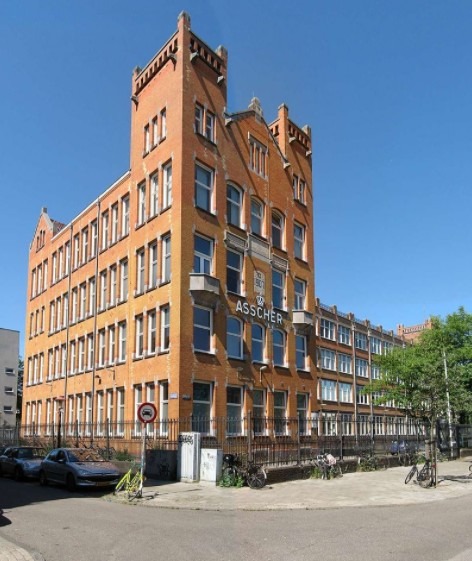During 1854, Joseph Isaac Asscher and his family founded the Royal Asscher Diamond Company, which was initially named as I.J. Asscher Diamond Company at Tolstraat 27 in Amsterdam. The family was prominent and had an esteemed reputation as the expert diamond artisans.
Who was Joseph Asscher?
Famously known as the Asscher Cut diamond creator, Joseph Asscher was one great name in the field and the history of diamond cutting. Diamond, at 10 on the Mohs scale, is the hardest of all minerals. Joseph Asscher was born from a renowned family of jewelers. He and his brother Abraham are from third-generation diamond experts and became the most popular in the field in the 20th century.
The Cullinan Diamond
In 1905 the Cullinan diamond at 3,106 carats (621.2 g) was discovered. This was a legendary find and achieved instant reputation across the globe. It was presented to King Edward VII. Hearing about the Asscher Family’s great reputation in cutting the stone, he invited the Asscher brothers to London to discuss cleaving the diamond.
Joseph Asscher was chosen to cleave the Cullinan into three parts, necessitated by inclusions within the rough diamond. Nine large stones were cut from it, the largest being the Cullinan I at 530.20 carats (106.040 g).
In February 1908, the audience was so thrilled and excited to watch Joseph Asscher cleave the huge stone. Joseph needed to hit the Cullinan in precisely the right place, to yield large, beautiful diamonds. However, his blade broke on his first strike, while the stone remained intact. He dismissed all present and set to work, creating larger, more potent tools.
The following week, he resumed the cutting but only allowed the notary public in the cutting room to witness his work.
Urban legend recounts that after striking the Cullinan diamond with a tremendous blow, Joseph had fainted. He later remarked that the adrenaline rush through him the moment the stone split was so intense, and all he could think to do was to examine the stone and check his craft repeatedly before rushing to the next room to share the good news. Later, the Cullinan diamonds were polished, ready to take pride of place in Great Britain’s Crown Jewels.
The formation and changing of the company’s name
Asscher senior’s son, Isaac Joseph Asscher, imparted and passed on to his sons the diamond cutting knowledge and their company. Later on, Joseph and Abraham renamed their company Asscher Diamond Company and oversaw the most prosperous years at the Asscher house. However, it was again renamed as the Royal Asscher Diamond Company in 1980 when it was given the Royal Prefix from Queen Juliana of Holland to recognize the company’s global stature.
The Asscher Family and the Asscher Cut
The “Asscher Cut” is the family’s trademark and their company was able to have it patented in 1902 by Joseph Asscher.
The cut comprises a square-cut diamond with chopped corners, a three-step crown, and a seven-step pavilion. The design allowed for a marked amount of reflected light, creating a sound measure of brilliance. This exemplary cut was the first signature cut to be patented. During the early twentieth century, Joseph devoted his time to polishing the Asscher Cut Diamond. He was then able to reduce the crown’s steps to two or three cuts, and the pavilion had only three or four steps. The modifications to the Asscher Cut gave more brilliance to the stone.
The Asscher family and their company became a big name for cutting large and rare diamonds. The largest diamond ever found was cut by Abraham in 1903. The Excelsior diamond was at 997 carats. It demanded an expert handling; inclusions within the rough diamond prevented it from being polished as a single stone. But Abraham was able to carve it into ten diamonds, which were primarily sold to anonymous purchasers.
The company Tiffany & Co. was able to buy three stones of the Excelsior diamonds. Four years later, the famous 3,106 carats Cullinan Diamond was discovered and presented to King Edward VII of England, and he invited Joseph Asscher to cleave the diamond. The resulting diamonds became part of Great Britain’s Crown Jewels.
Leading up to World War II, the renamed company Asscher Diamond Company had great success brought by the Asscher diamond’s popularity and their exclusive patent for the cut. However, when WWII broke, and with the approach of the Nazis, the Asscher company and family nearly vanished.
During the war, Amsterdam was occupied by the Nazi forces and seized all the diamonds at the Asscher headquarters and deported the entire Asscher family. No one left at the company as ll the employed diamond polishers was to the concentration camps. Eventually, the patent for the Asscher cut diamond expired, and imitations of the cuts started but with an inferior quality that did not follow Asscher’s proportion calculations.
Only ten Asscher family members, including Joop and Louis Asscher, and fifteen from the original five hundred diamond polishers survived the concentration camps. Joop and Louis Asscher rebuilt the company; it was still in Amsterdam but focused their efforts on building sales in New York. One company helped them; the De Beers company provided them with rough diamonds and access to its diamond sights. Slowly, the Asscher’s were able to regain some of the strength they once had and return to their status as a first-class diamond cutting company.
Today, the Asscher Diamond Company is still owned by their family, operated and managed by the fifth and the sixth generation Asscher’s. The firm regained its prestige with its Royal Asscher Cut. This has been up until today, one of the top diamonds cutting companies in the world. The Asscher’s had refashioned a desirable cut which they had exclusive rights to, as the original Asscher Cut had once been.


